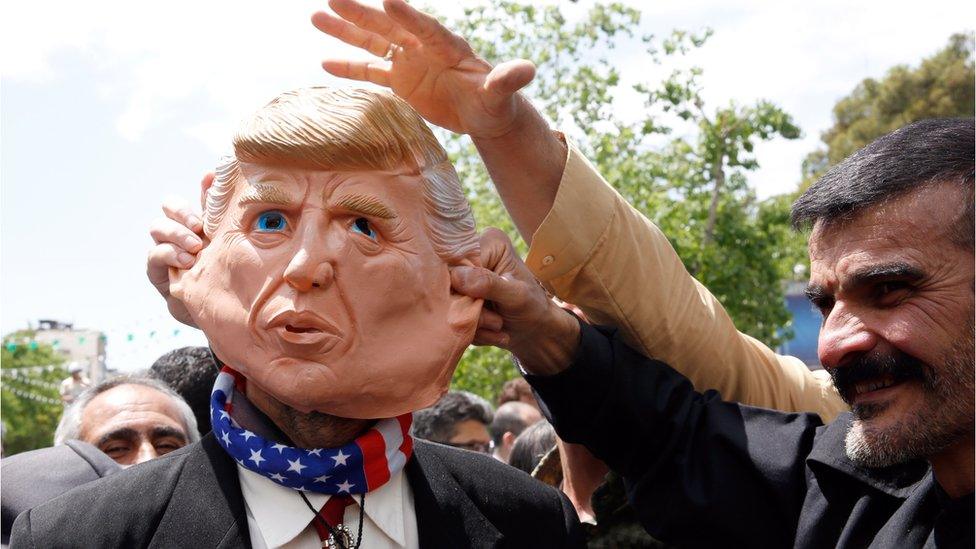US 'blames Iran' for damage to tankers in Gulf of Oman
- Published
US special representative for Iran: 'We are not looking to get into a war'
US investigators believe Iran or groups it supports used explosives to damage four ships off the United Arab Emirates on Sunday, media reports say.
Military experts were reportedly sent to investigate the incident and found a large hole in each of the tankers.
No evidence has emerged to show that Iran was involved. The affected countries are yet to assign blame.
The incident has increased tensions between Iran, which borders the nearby Strait of Hormuz, and the US.
About a fifth of oil that is consumed globally passes through the strait. Last month, Iran threatened to close it if it was prevented from using the waterway.
This followed a US decision to end exemptions from sanctions for major importers of Iranian oil.
The team of US military investigators discovered large holes in all four of the affected ships and believe they were caused by explosive charges, the Associated Press reports, quoting an unnamed official. They did not explain how the damage was linked to Iran.
CBS carried a similar report, external quoting unnamed US officials.
What do we know about the 'sabotage'?
Few details have been released about the incident, which is said to have taken place at about 06:00 (02:00 GMT) on Sunday within UAE territorial waters in the Gulf of Oman, east of the emirate of Fujairah.
The UAE foreign ministry said four commercial ships had been targeted in a "sabotage attack" near Fujairah port, just outside the Strait of Hormuz.
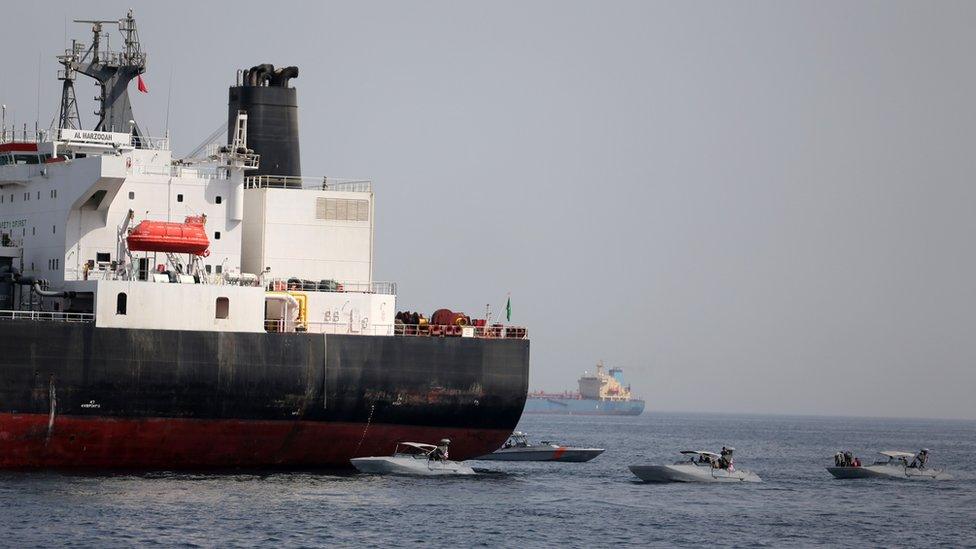
UAE Navy boats have been pictured next to Al Marzoqah, a Saudi Arabian tanker which was reportedly "sabotaged"
There were no casualties but Saudi Arabia said two of its ships had suffered "significant damage".
The Saudi energy minister, Khalid al-Falih, said one of the tankers had been on its way to be loaded with Saudi oil which was to be delivered to customers in the US.
Another damaged tanker was Norwegian-registered, while the fourth was reportedly UAE-flagged.
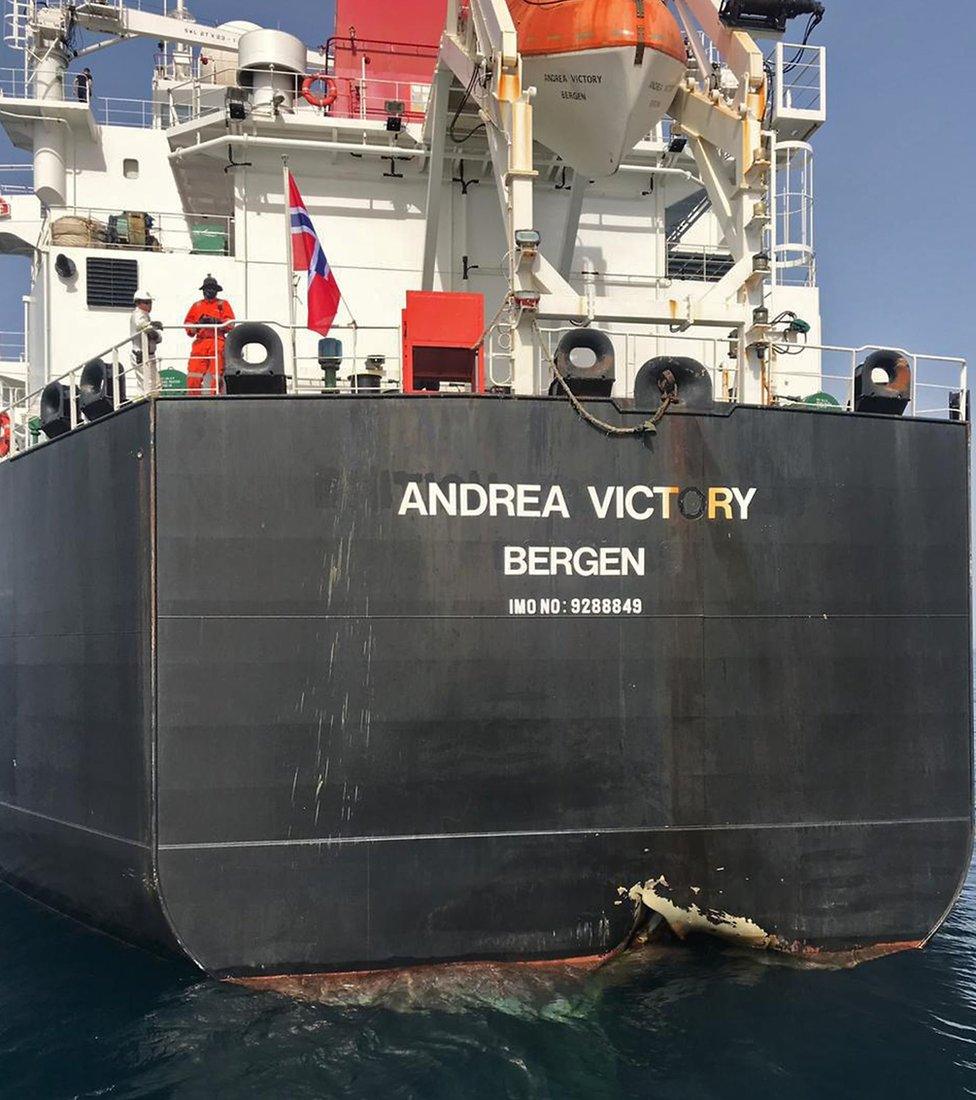
Norwegian firm Thome Ship Management said one of its vessels had been "struck by an unknown object" off Fujairah

Saudi TV has shown images of the damaged Saudi ships, and a picture released by the UAE shows a Norwegian-flagged vessel, Andrea Victory, with damage to its hull.
Thome Ship Management, a Norwegian firm which manages the ship, said in a statement it had been "struck by an unknown object on the waterline".

A deliberate attempt to increase tensions?

Compared with previous attacks on shipping in the Middle East - the USS Cole in 2000, the Limburg tanker in 2002 and more recent attacks off Yemen - the damage done to four tankers off the UAE coast on Sunday is minimal.
There has been no oil spillage, no flames and no casualties. But the timing is both suspicious and dangerous.
Whoever carried out this attack could hardly have been unaware of the rising tensions in the Gulf, with the US dispatching additional forces to the region. It would appear that the anonymous culprit was deliberately trying to ratchet up that tension, possibly provoking a conflict.
While Saudi Arabia and the UAE have stopped short of blaming their adversary, Iran, US officials have reportedly said that is where their suspicions lie. But Iran has condemned the attack as "dreadful" and a parliamentary spokesman said Iranian suspicions fell on Israel.

What has Iran said?
Iran has called for a full investigation into the incident which it described as "worrisome".
At the White House on Monday, US President Donald Trump issued a warning to Iran. "If they do anything, it would be a very bad mistake... If they do anything they will suffer greatly."
But Iranian President Hassan Rouhani was forthright in his response, suggesting the country was "too great to be intimidated by anyone".
"God willing we will pass this difficult period with glory and our heads held high, and defeat the enemy," he said in a meeting with clerics late on Monday.

Few details, many unanswered questions
By BBC Monitoring
Global maritime news website have questioned the details surrounding the incident. The influential Lloyds List Maritime Intelligence, for example, criticised the authorities for "scant" information.
Quoting the maritime security company Dryad Global, it said: "Saudi reticence to report the incident accurately within their own media channels and the current failure to provide imagery evidence of the attack raises important questions as to the nature of the attack."
The FleetMon website said: "What happened exactly, how bad were explosions and fire, if there were any, and what definition 'act of sabotage' means, how much true is indeed, the whole story, is so far anyone's guess."
Meanwhile, technology and conflict website The Drive said the lack of hard evidence added to the increased risk of regional conflict.

What is the background?
The US has previously warned that "Iran or its proxies" could be targeting maritime traffic in the region and, in recent days, deployed warships to counter "clear indications" of threats from the country.
Acting Defence Secretary Patrick Shanahan said the military had plans to send up to 120,000 troops to the Middle East, external should Iran attack US forces there or accelerate work on nuclear weapons, according to the New York Times.
But President Trump dismissed the report on Tuesday, saying: "We have not planned for that. Hopefully we're not going to have to plan for that. And if we did that, we'd send a hell of a lot more troops than that."
Iran dismissed the allegation that it could be targeting maritime traffic as nonsense.
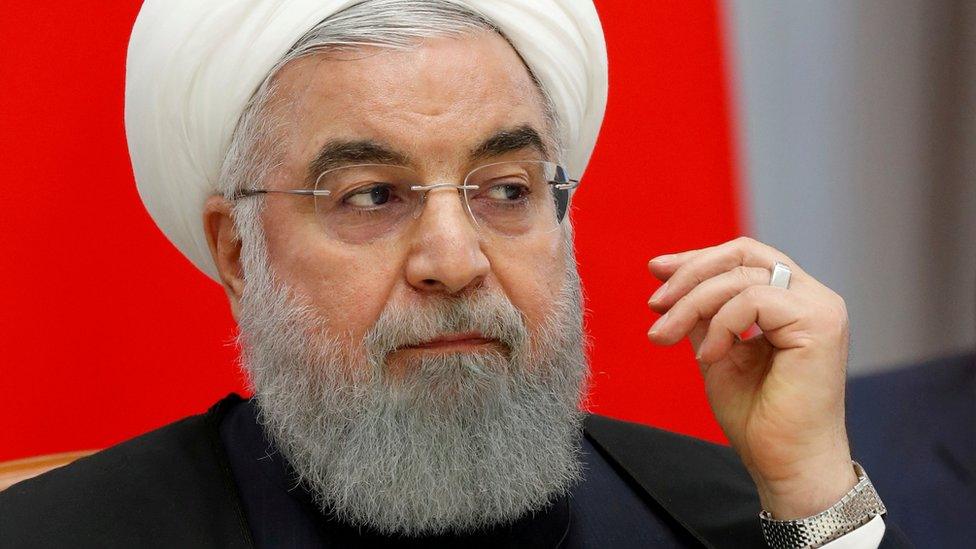
President Hassan Rouhani has said Iran is "too great to be intimidated"
Meanwhile, Spain has recalled a frigate that was deployed alongside a US aircraft carrier because of the rising tensions in the region.
"For the moment the frigate Mendez Nunez has left the combat group," a defence ministry spokesman told the AFP news agency. "It's a temporary withdrawal... as long as the American aircraft carrier is in this zone."
- Published13 May 2019
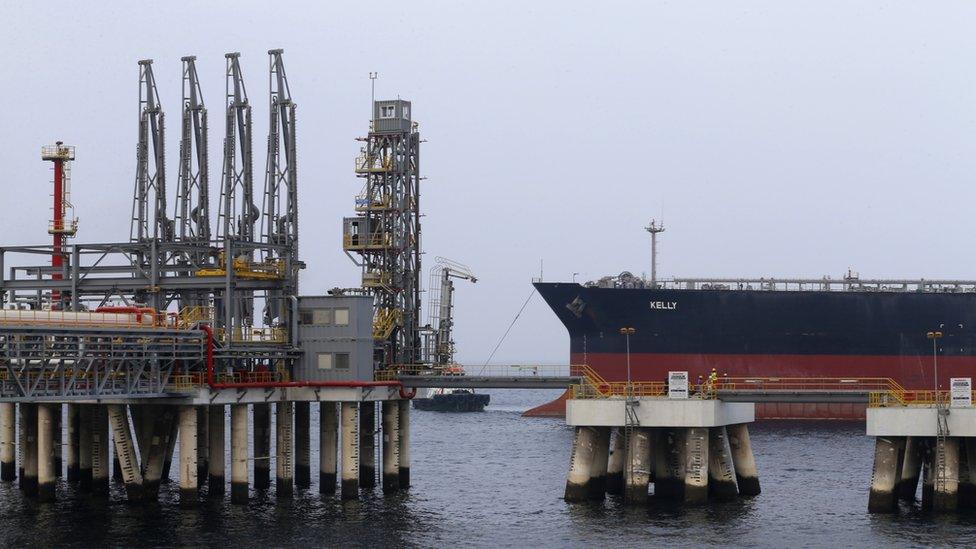
- Published12 May 2019
